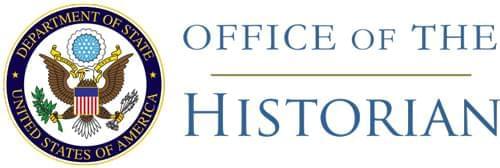690D.91/8–251
Memorandum by the Assistant Secretary of State for Near Eastern, South Asian, and African Affairs (McGhee) to the Secretary of State
Subject: Tension between India and Pakistan.
Background:
Among the many and complex difficulties between India and Pakistan two issues stand out at the moment:
- (1)
- The urgent problem occasioned by recent troop concentrations, particularly in the Punjab where 90,000 Indians face 46,000 Pakistanis (See Tab A),1 and
- (2)
- The closely related, but longer standing, question of the disposition of Kashmir.
Although it is believed that neither party desires war, an incident might lead to open hostilities at any time. India is not likely to initiate action since she now holds most of Kashmir. There is increasing danger that public opinion in Pakistan will force the government to resort to war to prevent a fait accompli in Kashmir. Since elections to be held in Kashmir in the fall could result in a showdown on this issue, Indian troops were brought in, according to Mr. Nehru, as a defensive measure. Indian concentrations were completed on July 14, and Pakistan movements in reaction were completed on July 18.
Dr. Graham, who has gone out in behalf of the U.N. to help resolve the Kashmir problem, has wisely, we think, resisted becoming involved in the question of troop concentrations. In the meantime Dr. Graham continues his efforts to bring the parties to agreement on the demilitarization of Kashmir. We have been told that Liaquat Ali has given Dr. Graham “favorable commitments” and that Nehru has promised proposals in writing this week. We are not optimistic that Dr. Graham will be successful.
Action by outside countries on this crisis so far taken includes:
- (1)
- UK discussions with India and Pakistan when troop movements first became known;
- (2)
- Australian offer of “good offices” which Liaquat Ali Khan accepted and Nehru rejected;
- (3)
- U.S. expression of deep concern;
- (4)
- Démarche by U.K. urging troop withdrawal and indicating availability of British “good offices”;
- (5)
- Expressions of interest by both the Burmese and Indonesians in the easing of tensions. (The Burmese Ambassador in Karachi told Ambassador Warren that a tentative proposal by the Burmese Foreign Minister that the Burmese and Indonesian Prime Ministers jointly visit both capitals was “killed” by Nehru.)
The exchange of messages between Nehru and Liaquat Ali has continued. Liaquat Ali on July 26 asked Nehru to come to Karachi provided there had been prior withdrawal of troops, and Nehru replied on July 29 with an invitation to Liaquat Ali to come to New Delhi without any preconditions.
Discussion:
(A) Troop concentrations: It is believed that the immediate crisis caused by troop concentrations should be kept out of the Security Council, at least for the present. We are consulting daily with the U.K. and are in touch with other Commonwealth countries, in an effort to effect troop withdrawals. We should, in this connection, be prepared to send personal messages to Nehru and Liaquat Ali from the President, if the situation worsens and no alternative appears. Continuing consideration is being given to the use of U.N. observers between the two lines, using either the present U.N. military observers in Kashmir or the U.N. Peace Observation Commission. In case of hostilities immediate Security Council action on a cease-fire resolution should be taken.
(B) Kashmir: We may hope that Dr. Graham will succeed in effecting demilitarization of Kashmir through agreement between the two parties, but must anticipate failure. Alternate lines of action in that unfortunate event might be:
- (1)
- Resolutions either in the Security Council or the General Assembly embodying the Graham recommendations or some variant of them.
- (2)
- Action toward solving the problem by other Asian countries to be taken outside the U.N. (Indonesia, Burma).
- (3)
- Attempt by the U.S. and U.K. acting jointly to seek an
entirely new approach to the problem. Indian and Pakistan
consent might be sought to deferring for a period of time,
such as ten years, the determination of the accession of
Kashmir, under conditions involving a combination of some of
the following elements in Kashmir:
- (a)
- Partial partition of Kashmir;
- (b)
- Establishing an Indian-Pakistan condominium over all or part;
- (c)
- Establishing a U.N. trusteeship over all or part;
- (d)
- Obtaining political agreement between India and Pakistan as to propaganda, military forces, and local government;
- (e)
- Establishing a joint Indian-Pakistan or U.N. Development Authority to provide for economic development, particularly through use of water resources;
- (f)
- Establishing a joint Indian-Pakistan Water Commission to resolve broader differences relative to water rights both in Kashmir and the Punjab as recently suggested by Mr. Lilienthal.2
Recommendations:
That we continue action along the above lines but that we be prepared as follows:
- (1)
- In the event of a worsening arising out of troop concentrations to be prepared for a personal appeal from the President to Mr. Nehru and Liaquat Ali;
- (2)
- Planning be undertaken for a suggestion along the lines of that proposed in (3) above with respect to Kashmir, which would only be considered for execution in the event of a failure of Dr. Graham’s present efforts.
- Annex entitled “Order of Battle—Kashmir and Indo-Pakistan Borders” not printed.↩
- David E. Lilienthal, Chairman of the U.S. Atomic Energy Commission, 1946–1950. Mr. Lilienthal advanced this proposal in his article “Another ‘Korea’ in the Making?” in Collier’s, August 4, 1951, pp. 22 ff. Discussion of this article, not printed, is included in Department of State files 690D.91/8–151 and 690D.91/7–2451. See also The Journals of David E. Lilienthal, vol. iii: Venturesome Years, 1950–1955 (New York, Harper & Row, 1966), pp. 65–281, passim.↩
